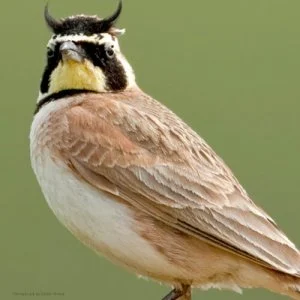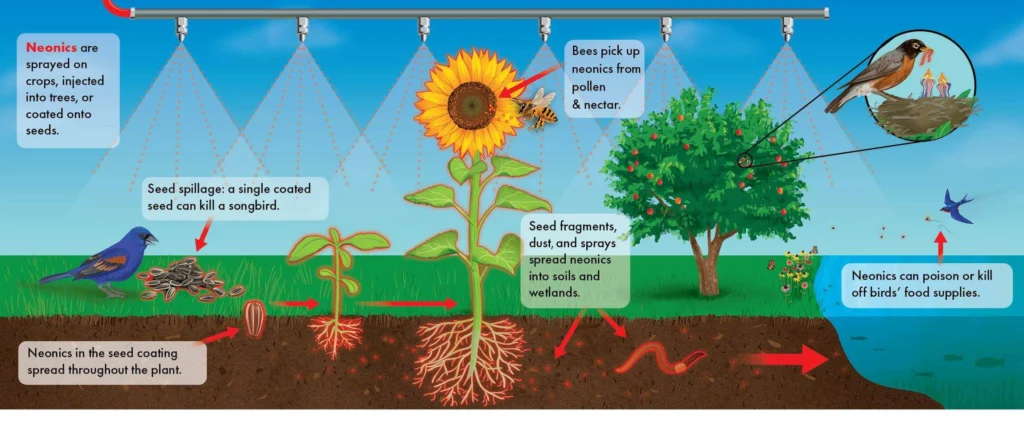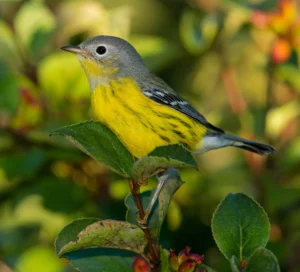Neonicotinoid Insecticides

Neonicotinoids — now the most widely used insecticides — are found in hundreds of products, including insect sprays, seed treatments, soil drenches, tree injections, and veterinary ointments to control fleas in dogs and cats. Shockingly, concentrations of insecticides sold for residential use on ornamental plants contain as much as 30 times the chemical load allowed in the agricultural sector.
As our 2013 study revealed, neonics are toxic to birds and invertebrates, even in small quantities, and they persist in soils for months and even years. These insecticides are so pervasive that our 2015 study found neonics in more than 90 percent of the food samples tested from Congressional dining halls.
These chemicals have the potential to affect entire food chains. They are persistent in the environment, infiltrate groundwater, and have cumulative and largely irreversible effects on the invertebrates that form the basis of the ecological food chain. The elevated levels of these chemicals in many surface waters are already high enough to kill the aquatic invertebrate life on which so many birds, bats, and other pollinators depend.
Beneficial terrestrial invertebrates such as earthworms are also killed by the neonicotinoids at extremely low doses. The insecticides are killing the diverse wildlife that pollinates our crops and controls our pests for free.
Unfortunately, even many who think they are neonic-free may be unknowingly using these products in their gardens. ABC collaborated on a recent Friends of the Earth study that found that more than half of the seedlings purchased at Lowe’s and other retailers are contaminated with neonic pesticides. (Here’s an easy-to-use list of products containing neonics.)

Thanks to heavy pressure from consumers and a consortium of organizations, including ABC, retailers, including Lowe’s, Home Depot, and BJ’s Wholesale Club, are now taking steps to label plants treated with neonics and ultimately to remove these chemicals from their plant production altogether.




